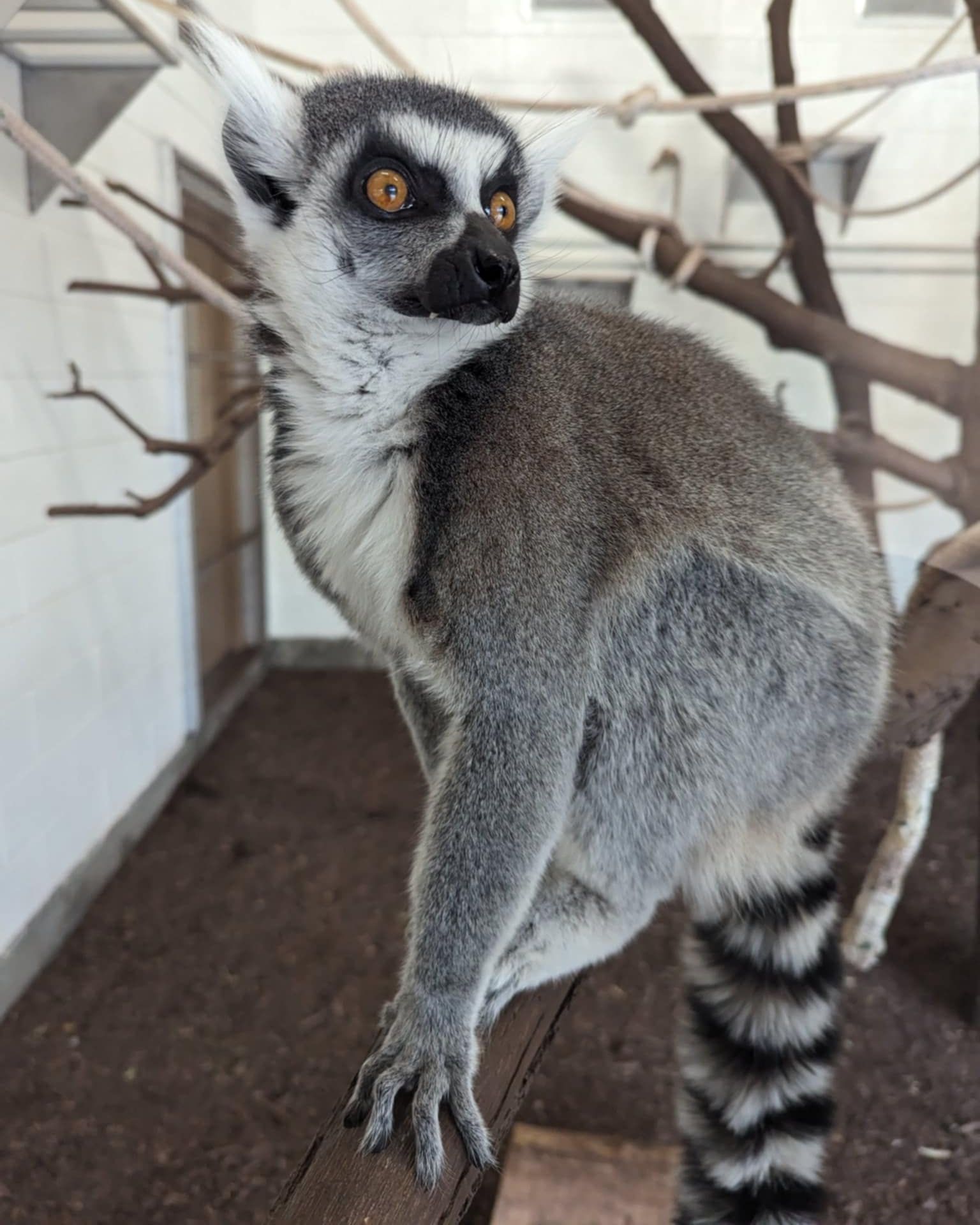- Understanding the role of lemur dental anatomy in grooming and social behavior.
- The significance of the tooth comb in lemur adaptation and survival.
- Overview of the habitat and natural behaviors of ring-tailed lemurs.
- Conservation efforts and challenges facing ring-tailed lemurs.
- The educational value of zoo exhibits like the Primate Forest in raising awareness and fostering conservation of lemurs.
Ring-tailed lemurs, native to the island of Madagascar, possess unique physical adaptations that help them thrive in their environment. One of the most fascinating features of these primates is their specialized dental structure known as the “tooth comb.” This adaptation is part of their elongated canine teeth, which play a crucial role in the social and grooming dynamics of lemur communities.
Lemur dental anatomy is far more than just a functional set of teeth—it is critical to their daily social interactions and hygiene. The tooth comb comprises two pairs of lower incisors and a pair of canines tightly aligned to form a comb-like structure. This innovation enables lemurs to groom their fur meticulously, removing debris, parasites, and dirt, which is essential for maintaining the health of their dense coats. Grooming is not a solitary activity; it reinforces social bonds within groups. In the wild, strong social structures are vital for survival, assisting in mutual defense and sharing of resources.
These elongated “teef” don’t merely serve in grooming but also as an instrumental part of feeding. They help in scraping gum and bark from trees and handling food items carefully. Such versatile usage highlights the evolutionary ingenuity of lemurs as they adapted to the varied and resource-scarce environments of Madagascar.
Beyond anatomy, exploring the habitat of ring-tailed lemurs unveils their extraordinary adaptability. They thrive in diverse ecosystems, from spiny deserts and dry deciduous forests to gallery forests along riverbanks. This adaptability is essential to their survival, given the rapid environmental changes they face. In their habitat, they spend considerable time on the ground, unlike other lemur species that are predominantly arboreal. This terrestrial behavior makes it easier for them to forage and move in groups, providing safety from predators.
However, the survival of lemurs is increasingly threatened due to deforestation, habitat destruction, and hunting. Madagascar faces one of the highest rates of biodiversity loss in the world, and the ring-tailed lemur is no exception to these pressures. Conservation efforts are critical for their survival, involving habitat protection, restoration projects, and anti-poaching initiatives. Organizations on the island and international groups work tirelessly to preserve these species by establishing protected areas and promoting sustainable land-use practices.
Zoos play a pivotal role in primate conservation by providing a controlled environment where visitors can learn about these incredible animals. The Primate Forest exhibit offers an engaging way to understand lemur adaptations, behavior, and the urgent need for conservation. By observing the animals up close, visitors gain a greater appreciation for the intricate details of lemur life, such as their grooming rituals using the fascinating tooth comb.
Educational programs in zoos encourage people to be more aware of wildlife conservation, promoting a broader understanding of biodiversity’s role in maintaining ecological balance. Such initiatives inspire the public to support conservation efforts actively, contributing to long-term sustainability goals for endangered species like ring-tailed lemurs.
Engaging with the public through educational experiences fosters an emotional connection, driving home the irreplaceable value of wildlife conservation. By supporting such efforts, individuals contribute to the enduring legacy of species and habitats threatened by human expansion and climate change. The ring-tailed lemur’s story is one of adaptation, survival, and the critical impact of conservation. Inspiring future generations to embrace this responsibility is essential for preserving the diversity and wonder of our natural world.
*****
Source Description
Honestly, it’s the “teef” for us.
Those elongated canine teeth are part of specialized front teeth that form a “tooth comb” that ring-tailed lemurs have to help groom themselves and each other.
Teeth, teef, toofers, whatever you call them, they’re pretty cool!
Visit Primate Forest to learn more about unique lemur adaptations!


